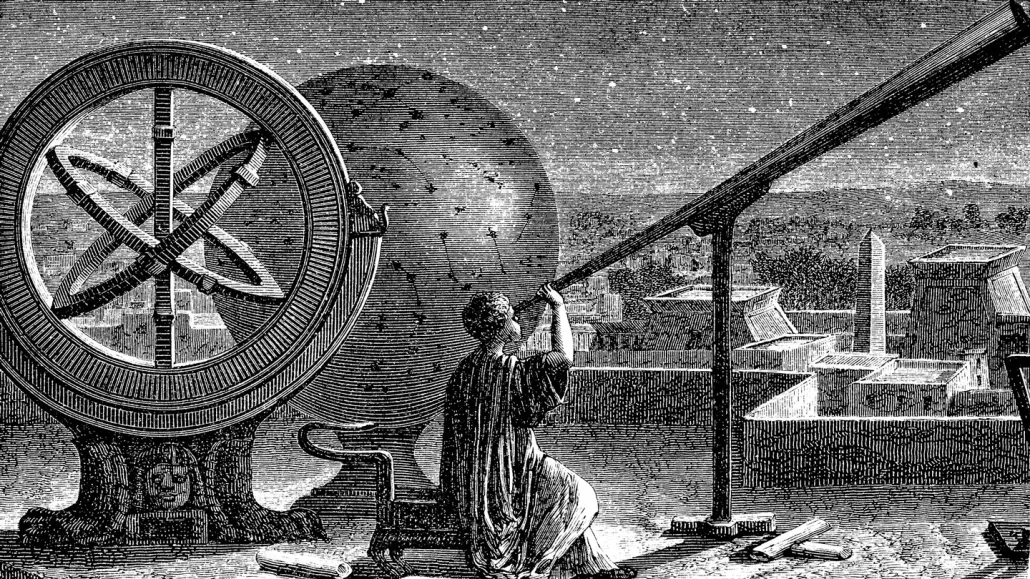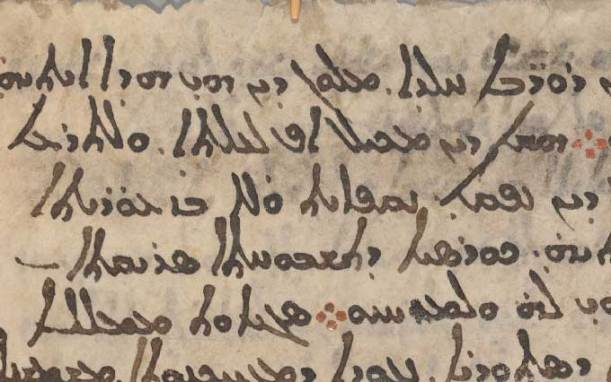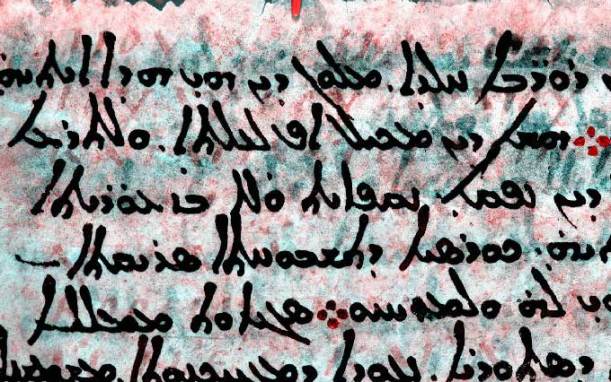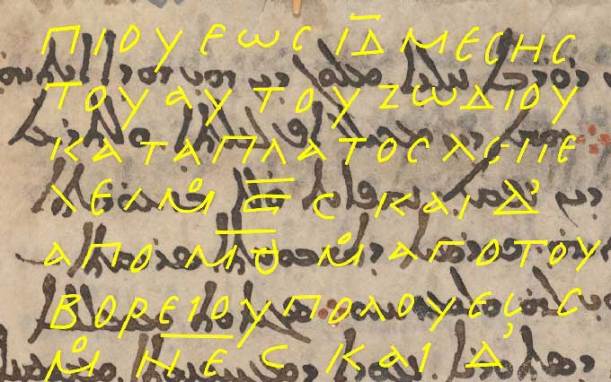
Ancient Greek astronomer Hipparchus, illustrated in his observatory in Alexandria, Egypt, was thought to have written the first star catalog. Now researchers have found part of it hidden in a medieval codex.
Nastasic/DigitalVision Vectors/Getty
- More than 2 years ago
Fragments of a star catalog from the second century B.C. have turned up in a manuscript that had been erased and written over centuries later. A new analysis of the religious manuscript shows that the hidden text is probably from the ancient Greek astronomer Hipparchus, whose map of the stars — thought to be the first attempt to map the entire sky — has long been considered lost.
“I think this lays to rest doubts about the existence of Hipparchus’ catalog” and confirms that he was “trying to measure coordinates for all of the visible stars,” says Victor Gysembergh, a historian of ancient science at CNRS in Paris. He and his colleagues reported the discovery in the November Journal for the History of Astronomy.
The manuscript that concealed the fragments was a palimpsest, or a parchment that had been erased and reused, called the Codex Climaci Rescriptus. The codex probably comes from the monastery of Saint Catherine of Sinai in Egypt, and most of it is currently housed at the Museum of the Bible in Washington, D.C.
The visible writing is a Christian text called the Ladder of Paradise. But shadows of earlier symbols were visible behind it. In 2017, researchers with the Early Manuscripts Electronics Library in Rolling Hills Estates, Calif., and the Rochester Institute of Technology in New York took digital pictures of the codex in many wavelengths of light, from many different angles. This technique is called multispectral imaging and is used to analyze palimpsests and other damaged books (SN: 10/3/07). Light that reflected off the ancient ink, or that made the ink fluoresce, highlighted the hidden text. Once the pages are digitized, researchers all over the world can study them without leaving their computers.
-

This detail of the codex shows the original writing in ordinary light, with some shadows of the undertext visible behind it. Courtesy Museum of the Bible Collection. All rights reserved. © Museum of the Bible, 2022; V. Gysembergh, P.J. Williams and E. Zingg/Journal for the History of Astronomy 2022 -

Here is the same codex detail shown after multispectral analysis, with Greek undertext shown in red below the overtext in black. Courtesy Museum of the Bible Collection. All rights reserved. © Museum of the Bible, 2022; V. Gysembergh, P.J. Williams and E. Zingg/Journal for the History of Astronomy 2022; Multispectral image: Keith T. Knox/Early Manuscripts Electronic Library and Lazarus Project of the University of Rochester -

The Greek text that was revealed by multispectral analysis is highlighted in yellow. Courtesy Museum of the Bible Collection. All rights reserved. © Museum of the Bible, 2022; V. Gysembergh, P.J. Williams and E. Zingg/Journal for the History of Astronomy 2022
Biblical scholar Peter Williams of the University of Cambridge was studying the digitized papers during one of the COVID-19 lockdowns. He and his team had previously found ancient poetry about astronomy beneath the main text. This time, he also found something that looked like astronomical measurements.
Williams reached out to Gysembergh and historian Emanuel Zingg of Sorbonne University in Paris for help. Gysembergh immediately thought of Hipparchus.
Hipparchus was a Greek astronomer and mathematician who lived between about 190 and 120 B.C. Indirect evidence suggests that he made the first star catalog that used two coordinates to uniquely define a position in the sky, rather than describing constellations’ positions relative to each other.
“I think most scholars believe there was such a catalog,” says Mathieu Ossendrijver, a historian of astronomy at Free University Berlin who was not involved in the new work. But the best evidence for it came from poor translations or references in later catalogs, like that of astronomer Claudius Ptolemy in Alexandria, Egypt, four centuries after Hipparchus.
To test the idea that the fragment was part of Hipparchus’ catalog, Gysembergh and colleagues first painstakingly translated the revealed passage. “A lot of it was, ‘Can you read this? I can’t,’” Gysembergh says. “We would struggle over every letter, every numeral.”
The passage turned out to be a description of the constellation Corona Borealis, the northern crown, giving numerical coordinates for several of its stars. The coordinates were written in an unusual notation that was thought to have been used by Hipparchus and no one else.
Next, the researchers used planetarium software to calculate where those stars would have been in the sky in 129 B.C., when Hipparchus was alive and working. Those calculations matched the ancient manuscript’s notations to within one degree.
“It’s quite clear that it is actually a well preserved, well copied, not much distorted part of the original catalog of Hipparchus,” Ossendrijver says. “It’s really an important discovery.”
Astronomers in ancient Babylonia may have had their own star catalog that was written even earlier, Ossendrijver says. “Could [Hipparchus] have picked up the idea of making a catalog maybe from Babylonians, and maybe even some concrete data?”
Gysembergh is hopeful that more of the Hipparchus catalog could turn up in other parts of the Codex Climaci Rescriptus, or in other texts that haven’t been analyzed with multispectral imaging yet. “There’s so much more to find in these manuscripts,” he says. “We’ve hardly scraped the surface.”







